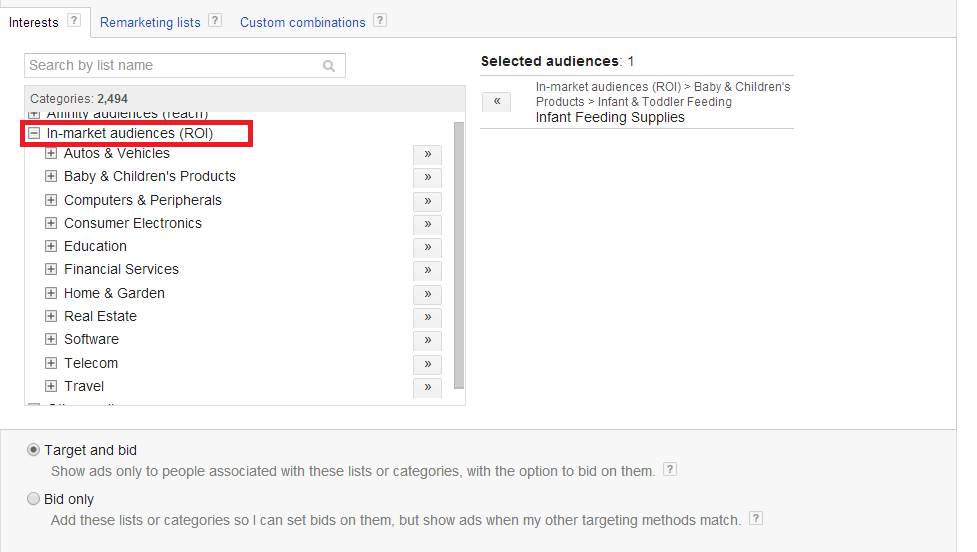
At the core of every online advertiser’s mission is delivering a perfectly tailored message to a prospect at the moment they are ready to take action. With in-market audiences, released in beta last November, Google claims it can get advertisers closer than ever to this goal.
In-market audiences allow advertisers to set up their Display campaigns to reach people who are further down the funnel and ready to make a purchase. How? By connecting ads to consumers who are actively researching or comparing products and services across the Google Display Network.
In-market segments allow you to reach customers when they’re ready to buy
How In-Market Audiences Work
So what distinguishes in-market audiences from other interest categories? Google says that they can distinguish interest from purchaser’s intent by using real-time data to categorize a potential customer with intent to buy. Google will factor in metrics like:
- the content of sites browsed
- the proximity and frequency of visits
- account clicks on related ads and
- subsequent conversions
to determine a purchaser’s intent. In this manner, Google is able to classify users, targeting those most interested in an advertiser’s offering.
Here’s an example: say you’re a car dealership looking to target searchers who are ready to buy a car. Google will look to find people who are clicking on ads related to cars, exploring relevant searches, looking at consumer reviews, car reviews, car comparison sites, etc. and predict whether these consumers are ready to buy. Advertisers can then tailor the messaging of their ads to make them highly relevant to this subset of purchase-ready buyers.
Make it easy for the consumer; deliver the right message at the right moment!
So what does Google say you’ll get by using in-market segments? For starters, advertisers will be able to expand reach in new ways to specifically include people engaged in comparison shopping and actively researching with intent to buy. Instead of reaching only the “hand raisers” (people who have expressed interest in certain categories), advertisers will be reaching “signalers” (people who are giving off signals that they are truly ready to buy). In addition, reaching consumers further along down the conversion funnel should intuitively mean more conversions and better ROI.
Do In-Market Audiences Really Work?
How has this panned out in practice for advertisers? Well, for our some of our clients at WordStream, it seems to be a mixed bag. General trends across accounts point to increased traffic to site but inconclusive changes to the volume of conversions.
I know what you’re thinking—all traffic, no conversions? I thought this was all designed to be a direct response effort! Well, if you factor in the impact that in-market segments have on remarketing campaigns, you may see a different picture. Google suggests that the real impact on conversions comes when using in-market segments in conjunction with remarketing. Advertisers can layer the in-market on top of their remarketing lists to increase reach while maintaining relevancy. The hope is that this effort will then bolster the volume of conversions coming in through remarketing.
In-Market Audiences: Setup & Best Practices
If you’re sold and ready to give these in-market audiences a try, you can find and set them up in your Display targeting under “Interests”:
Once you’ve added the appropriate categories, you can try implementing some of Google’s preliminary best practices:
- Google recommends that advertisers avoid using other targeting methods with in-market audiences in the same ad group/campaign.
- Google also recommends that advertisers focused on direct response use CPA bidding to monitor and control ROI effectively.
- Advertisers may also use CPC bidding but Google strongly discourages the use of CPM bidding with in-market audiences.
Currently in-market audiences are only available in English, German, Spanish, Portuguese, French and Japanese. What do you all think? Have any of you seen success with in-market audiences?









